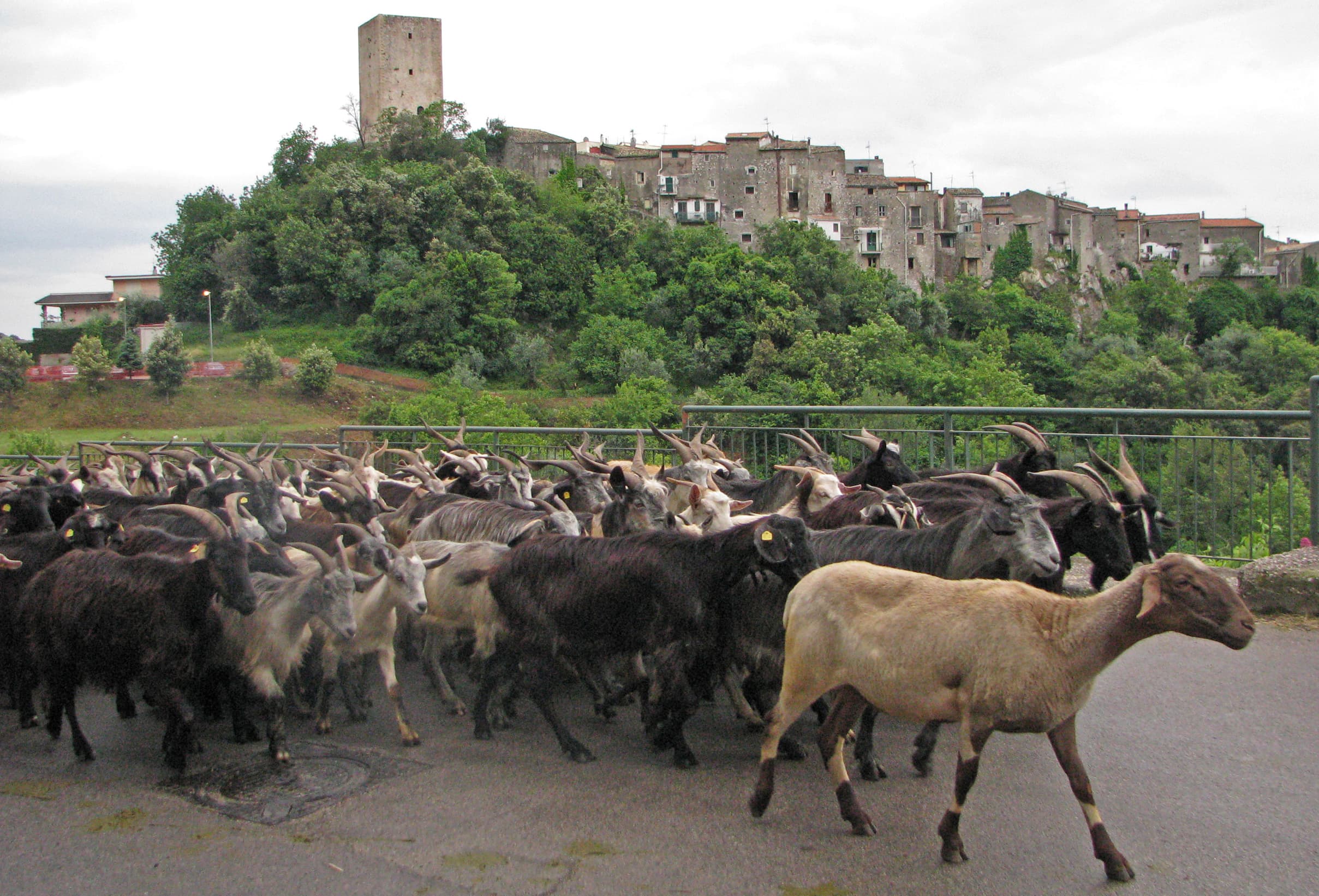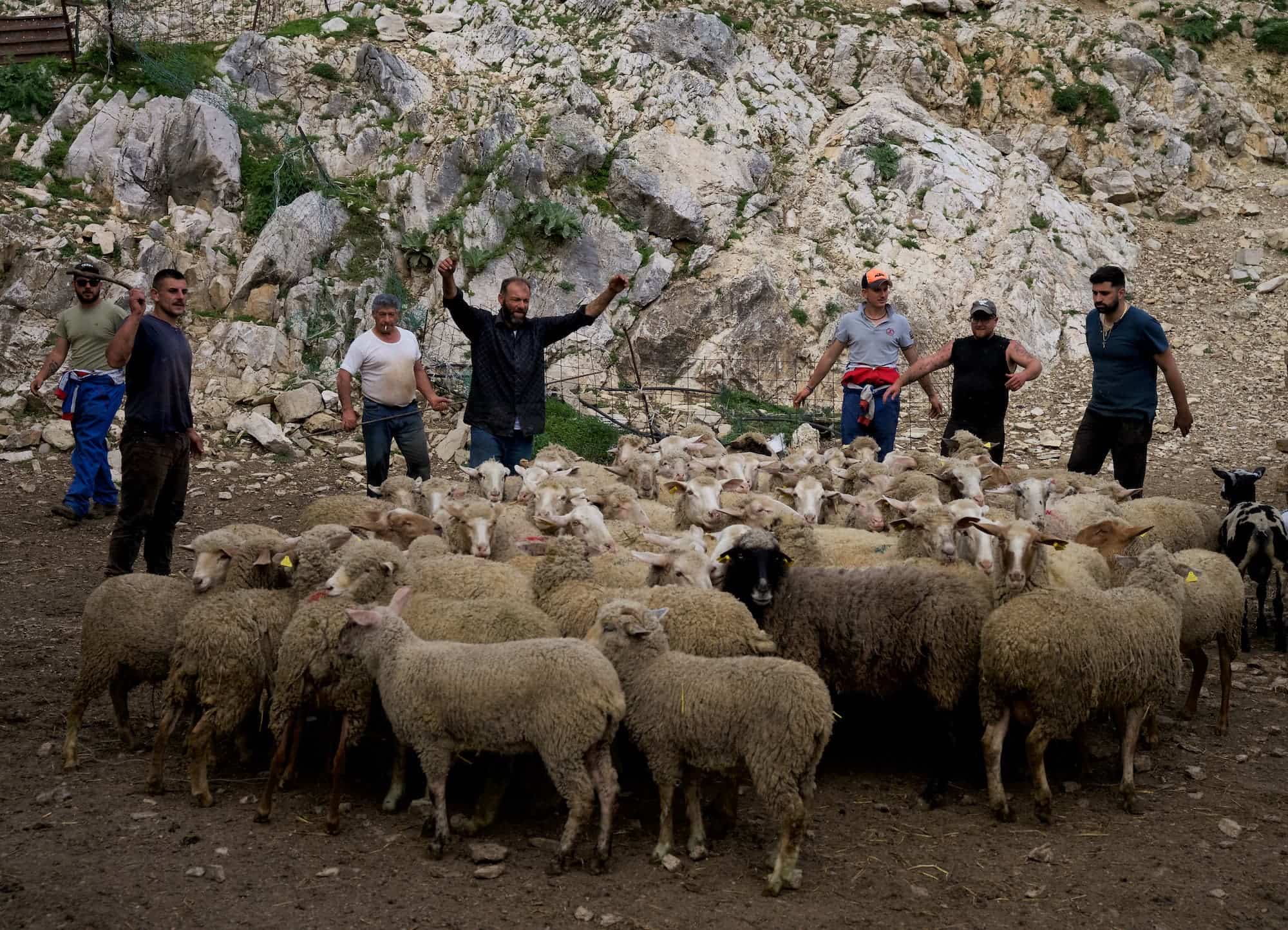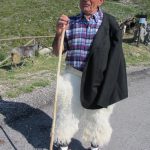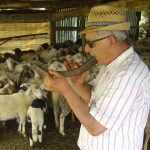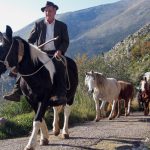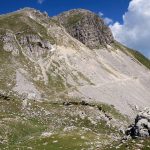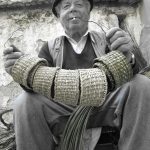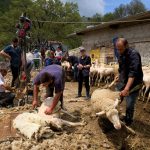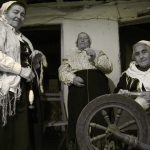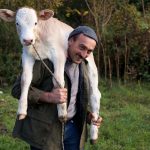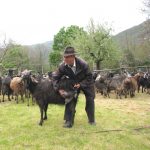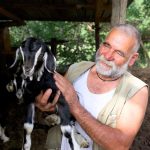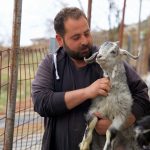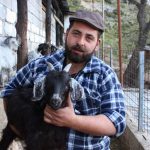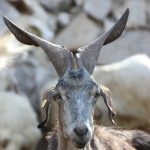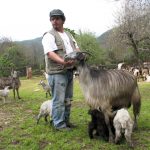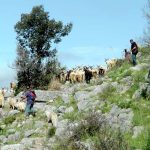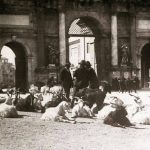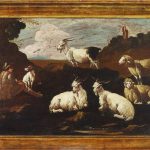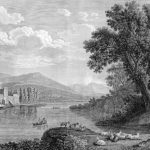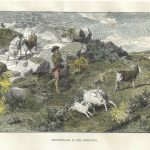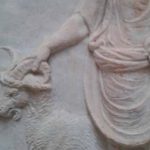Goats and Pastoralists of the Aurunci Mountains and Ciociaria (Central Italy)
The pastoralists of the Aurunci Mountains and Ciociaria (Central Italy), like all other Italian pastoralists, do not live in separate communities and their households are generally found in ancient villages and rural areas —usually in the uplands. They are engaged in extensive animal husbandry and seasonal movements (transhumance); their herds are largely composed of different breeds of sheep, goats, cows and horses.
Their system of raising animals is based on the selection of local breeds, strongly adapted to the territory and on the production of high-quality meat and cheese. In particular, the eco-systemic services associated with such a system are manifold and include fire control through the reduction of plant biomass, the maintenance of old trails (tratturi), the natural fertilization of soils, natural seed propagation by livestock and the creation of ecological niches which are essential to the survival of many bird species and necrophagous animals.
Since the beginning of the 20th century, there have been a series of events, such as intense immigration throughout the fifties, as well as the economic boom of the sixties, followed by population increase and the expansion of urban centres that have taken over agricultural land. This, in turn, has adversely affected the agricultural economy and the degree of social cohesion amongst rural communities. An instance of such changes is represented by the drastic fall of the local market controlling the trade of selected non-timber forest products such as stramma (Ampelodesmos mauritanicus), myrtle leaves and sage, which —in the past— were part and parcel of the local economy. These transformations have had a direct impact on the sustainable management of upland areas, also leading to the progressive loss of ethno-botanical knowledge. As a result, stone terraces and other agricultural improvements have been increasingly colonized by invasive species. On the other hand, because dead vegetation is no longer collected —as in the past— the forest understory is now left largely unmanaged. Similarly, branches of myrtle, erica and lentisk, which were traditionally utilized as firewood for traditional ovens, are no longer collected. It clearly appears that the drastic decrease of customary human activities in the upland areas of Aurunci and Ciociaria has made them more vulnerable to summer fires. Traditional wheat varieties and legume species, such as almortas (Lathyrus sativus) have disappeared, and the majority of stone terraces have now been abandoned.
As of now, several factors continue to influence the decision of young pastoralists on whether to continue their family business. On the one hand, legislation tends to reward large companies (dairy factories) over small-scale herd owners, whose cheese production is limited. Moreover, norms and laws regulating cheese production remain very strict, while competition brought in by imported meat is further threatening local production.
Another phenomenon that is adversely affecting traditional grazing are the activities of people who engage in free-range cattle raising as a form of secondary income and with the final objective of receiving payments from EU common agricultural policy (CAP) funds. Their livestock is normally left without custody for months, and the main obligation of the owners is mainly limited to the filling of drinking troughs, during summertime. Often, these free herds encroach on the land that has already been allocated to full-time herders, thus fostering competition on the already limited grazing land.
On-going climate change is another key concern for local pastoralists. In fact, rain scarcity does not facilitate the renewal of pastures, while excessive heat causes the increase of animal parasites, especially ticks. An additional challenge to an extensive livestock system is represented by the proliferation of feral dogs, wolves, and wolf-dog hybrids. Often, these animals tend to move in groups and attack herds, causing significant economic losses to pastoralists.
On this exhibition
In this exhibition, I have focused on some aspects of the ancient agroecological pastoral knowledge (the art of basketry, the use of bells and musical instruments, cheese making, wool spinning, etc.), furthermore I have attempted to describe the aesthetic and utilitarian parameters being used by pastoralists to identify their goats. Undoubtedly, these parameters are different from those being employed by zootechnicians, such as those affiliated with ARSIAL (The Lazio Regional Agency for Development and Innovation in Agriculture).
With the Regional Law of 1st of March 2000/n.15, the Lazio Region (Central Italy) intervenes in the protection of genetic, animal and plant resources, of agricultural and zootechnical interest, which are native to the region. Between 2003 and 2006, ARSIAL has added four new goat breeds to the ‘Regional Register’. These breeds include: capestrina, fulva, grigia ciociara and bianca monticellana.
However, there are substantial differences between pastoralists’ interpretations and those of ARSIAL zootechnicians, with respect to the attribution of the term 'breed' to types of goats (C. hircus) that, in most cases, have no morphological differences but rather a marked variation in coat colour diversity. My own findings show that the division of native goats of the Aurunci and Ciociaria into distinctive breeds does not reflect the historical/anthropological reality of this territory and, furthermore, it does not consider the complexity of aesthetic and utilitarian parameters being used by pastoralists themselves for the identification and selection of their own animals.
From an anthropological perspective, the criteria used by ARSIAL to identify goat breeds, show an inherent contradiction: in an attempt to preserve certain typologies of goats with well-defined phenotypic characteristics (e.g. coat colours), it excludes (or considers as irrelevant) other chromatic variations that, instead, occupy a specific ‘taxa' within pastoralists’ own ethno-scientific classification. In other words, some phenotypic characteristics related to coat colour diversity for which pastoralists possess a detailed nomenclature (and to which they attribute an aesthetic value) are, instead, regarded by ARSIAL as «zoognostic defects». As a result, the selection proposed by ARSIAL for the conservation and safeguarding of certain goat typologies might have the ultimate effect of drastically reducing goats’ chromatic diversity that, indeed, is strongly imbued with cultural values.
In this exhibition, a preliminary examination of paintings between the sixteenth and eighteenth centuries, in addition to photographic images of late 800, suggest that, for a long period, the common and dominant characteristics of goats in the Central Apennine Italian regions were divergent flat horns, erect/semi-erect and/or horizontal ears, as well as a marked chromatic variation.
Acknowledgments
I would like to thank the Centre for Biocultual Diversity (CBCD) of the School of Anthropology and Conservation of the University of Kent (UK) for the continuous and fruitful collaboration over the years and, in particular, with reference to the on-going research project Bringing in pastoralists voices. A very special thanks goes to the Firebird Foundation for Anthropological Research (USA) for the essential and valuable assistance towards the digitalization and archiving of my field data, in the context of ‘The Laura W.R. and George N. Appell Research Grants for the Collection of Oral Literature and Traditional Ecological Knowledge’. The collaboration of all pastoralists who have engaged with this initiative has been pivotal to the completion of this project and, therefore, has been immensely appreciated.
Dario Novellino received his Master’s degree in Social Anthropology from the School of Oriental and African Studies (University of London) in 1995 and his doctorate in Environmental Anthropology from the University of Kent in 2003, where he is currently affiliated with the Centre for Biocultural Diversity of the School of Anthropology and Conservation. He has curated the setting up of the Southeast Asian collection of the Ethnobotanical Museum of Federico II University in Naples (Italy). In recognition of his long-term advocacy of and commitment to indigenous peoples and pastoralists, he was recently conferred the prestigious Ostrom Award. He has published extensively in the fields of ethnology, traditional knowledge, shamanism, cosmology, indigenous peoples' rights, and anthropology of development.
Recommended readings
Carusi, S. 2019. Le Transumanze Millennarie e la Capra della Valnerina, in Capra Facciuta della Valnerina . Racconto di una Popolazione Caprina Dimenticata . Dorillo A. e Concezzi L. (Eds). Collana i Quaderni della Biodiversita’ no. 7. Regione Umbria: Servizio Rurale e Agricoltura Sostenibile.
Fukui, K. 1996. Co-evolution between Humans and Domesticates: The Cultural Selection of Animal Coat-Colour Diversity among the Bodi, In Ellen R. & K. Fukui (Eds) Redefining Nature. Ecology, Culture and Domestication. Berg: Oxford & Washington, D.C.
Gabba, E. 1988. La pastorizia nell’età tardo imperiale in Italia, In Whittaker C.R. (Ed.), Pastoral Economies in Classical Antiquity, Proceedings of the Cambridge Philological Society.
Giacche’, L. 2019. Il Dilemma della Capra, in Capra Facciuta della Valnerina . Racconto di una Popolazione Caprina Dimenticata , Dorillo A. e Concezzi L. (Eds.). Collana i Quaderni della Biodiversità no. 7. Regione Umbria: Servizio Rurale e Agricoltura Sostenibile.
Novellino, D. 2021. Conocimiento Etnocientífico, Iconografía Antigua y Evolución Histórica de Algunas Tipología de Cabras en Riesgo de Erosión Genética (Lazio Inferior – Italia Central). El Pajar (Cuaderno de Etnografía Canaria), n.35, December 2021.
Novellino, D. 2007. Tradiciones agro-pastoriles, diversidad biocultural, y cambio cultural en el Parque Regional Aurunci (Italia Central). El Pajar (Cuaderno de Etnografía Canaria), n.24, Agosto 2007.
Ricci, A. 1996. Ascoltare il mondo. Antropologia dei suoni in un paese del Sud d’Italia. Il Trovatore: Roma.
Ricciardi, L. 2004. Le Universita’ di Maranola e Castel Onorato alla meta’ del settecento. Centro Storico Culturale Gaeta .
Sarti, F.M., C. Pieramati et all. 2019. La Caratterizzazione Genetica, in Capra Facciuta della Valnerina . Racconto di una Popolazione Caprina Dimenticata , Dorillo A. e Concezzi L. (Eds.). Collana i Quaderni della Biodiversita’ no. 7. Regione Umbria: Servizio Rurale e Agricoltura Sostenibile.
Treglia, A. 2014. Mola e Castellone di Gaeta oggi Formia. Immagini Inedite in Biblioteche e Musei Italiani ed Esteri. Graficart: Formia




